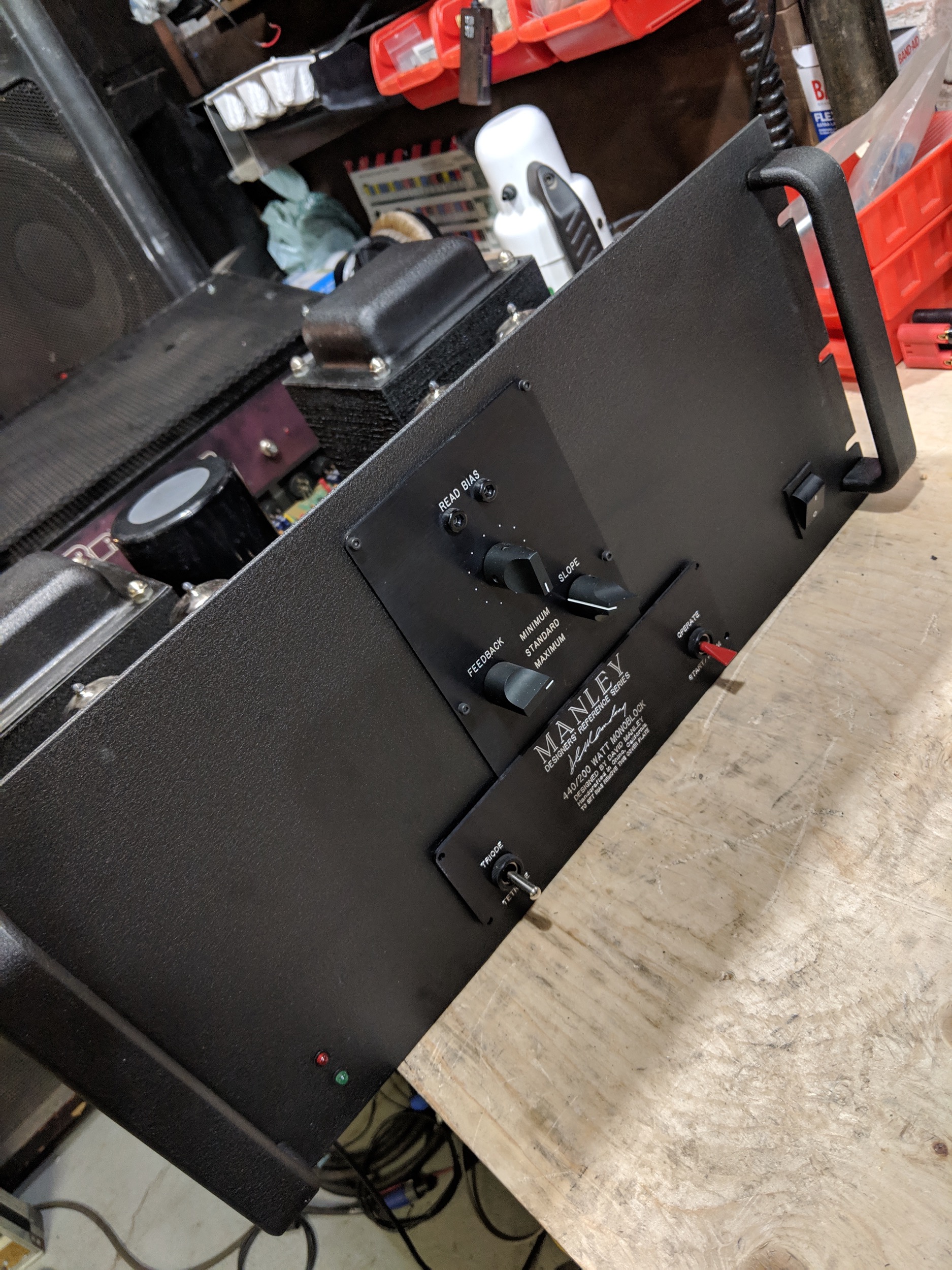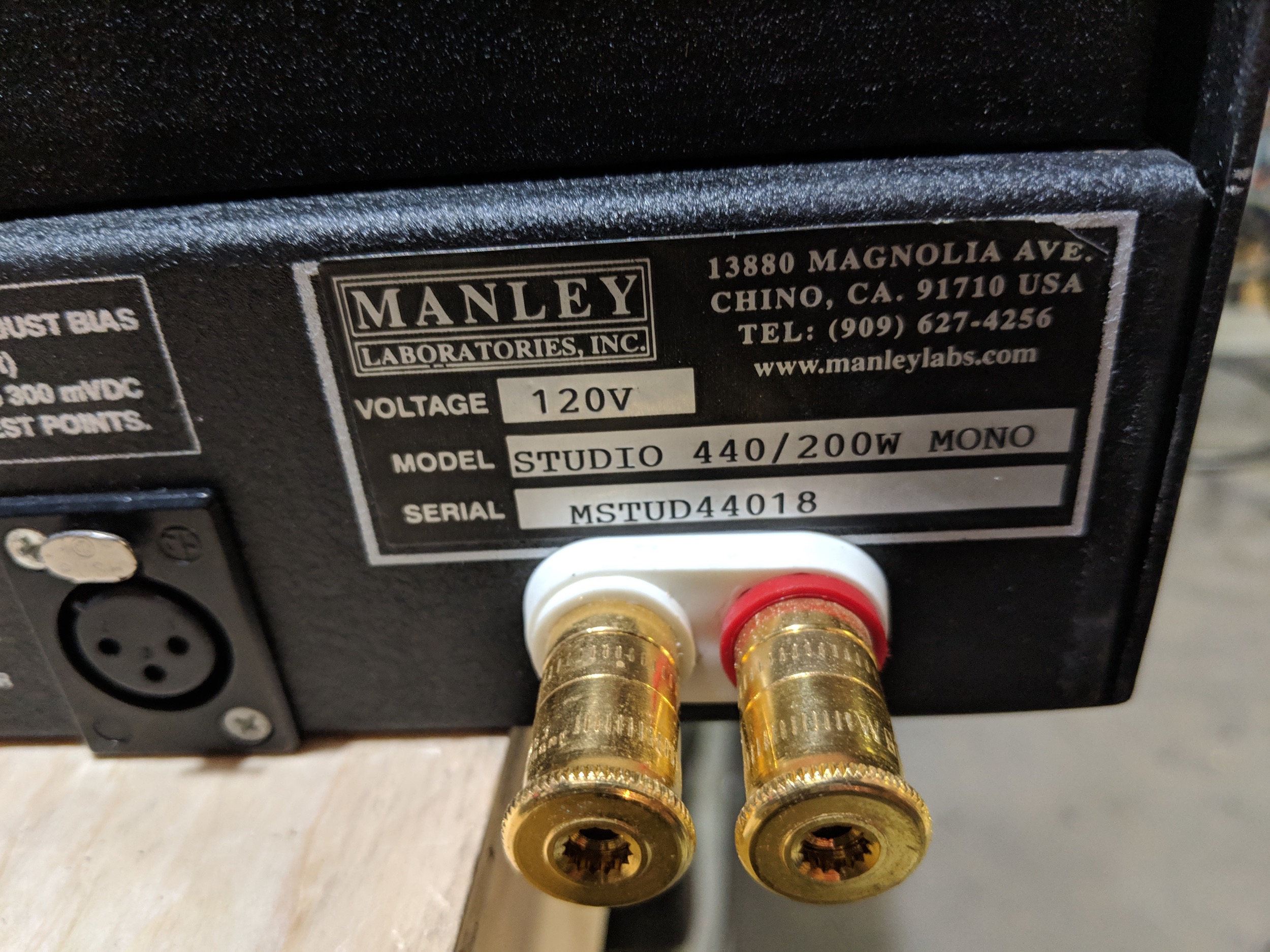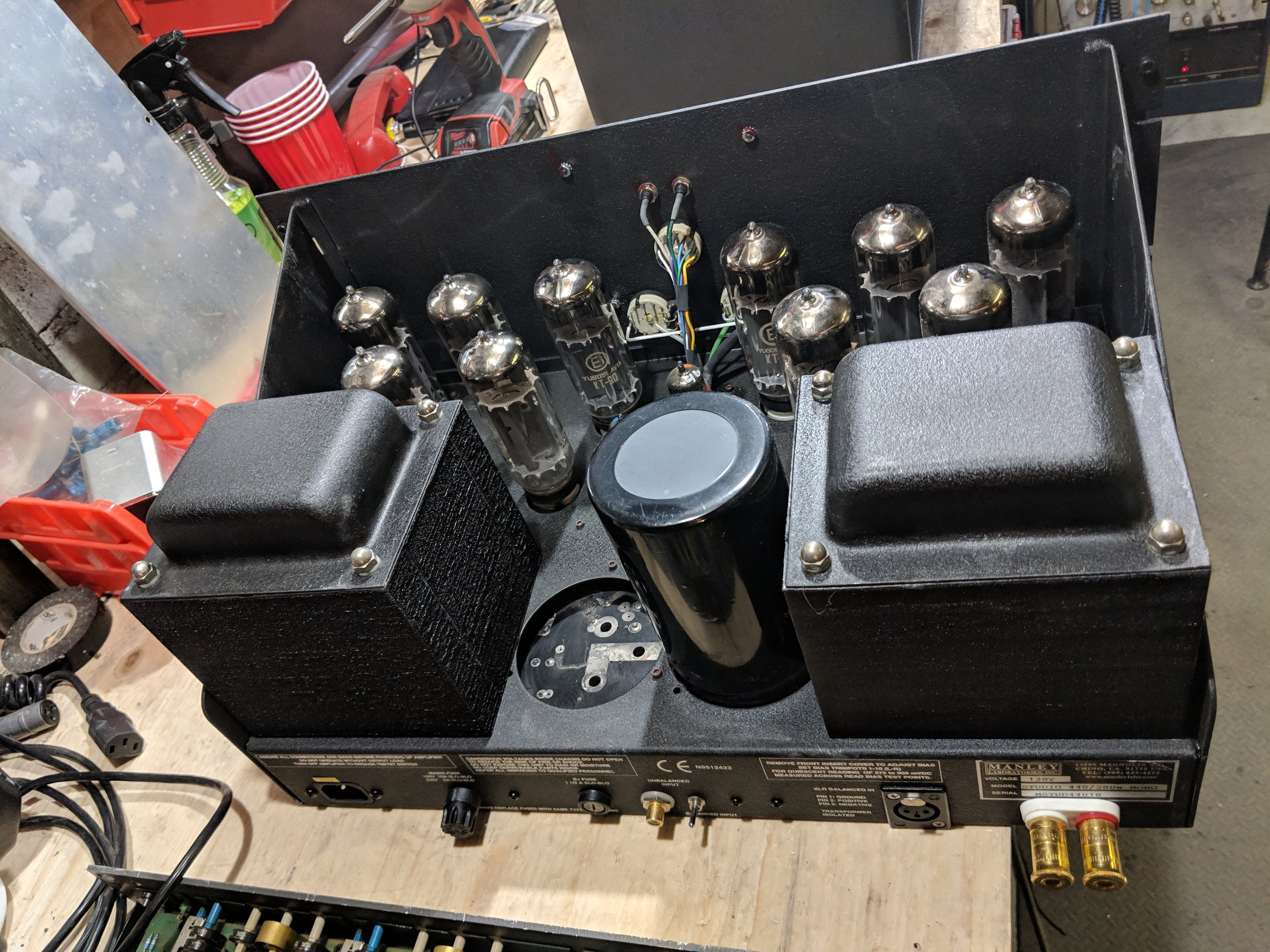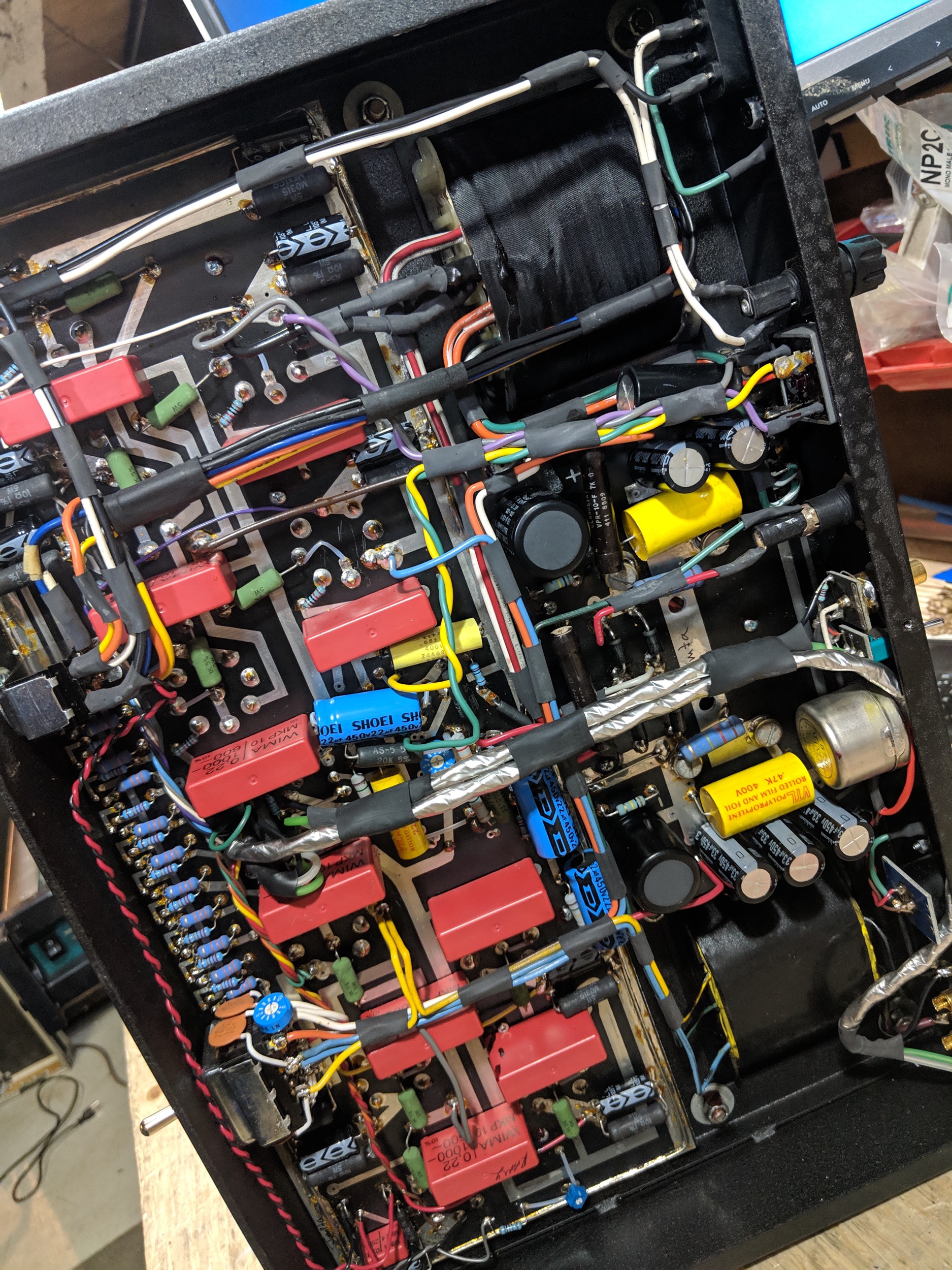The Manley Studio 440 and 240 Watt Monoblock models were black powder coated steel chassis packaged versions of their more beautiful hifi brothers of the time, the Manley Reference 440/200 and Manley Reference 240/100 watt amplifiers. There is more extensive info about the guts and circuitry used in these amps on those pages. The only major difference between the "studio" models and the "reference" models were the chassis. Below is the original sales text as seen in the last printed pro audio brochure we did.
We believe the monitoring system (speakers, amplifiers, and room) is the most important equipment in any recording or mastering room. This is the lens through which you inspect all your work and make all your decisions. It is the first thing a new client hears when deciding whether your room is the room. Then there is the question of aural fatigue brought about by inferior amplifiers running at a too-high level that engineers and producers have to deal with into the wee hours. And later (in the accounting department) the cost of replacing drivers constantly being blown by poor solid-state amplifiers clipping into square wave. . . The answer, unequivocally, is high power with lots of headroom, low distortion, VACUUM TUBE amplifiers. Manley Labs has a world-wide reputation for high-end amplifiers in the audiophile market; we make scads of 'em, actually, from 15 watts of single-ended insanity up to 500 watt brutes.
SPECIFICATIONS
Manley Studio Chassis 240 Watt and 440 Watt Monoblocks:
ALL-TUBE monoblock design
10 x KT90 or 6550A output tubes (440 watt model)
10 x EL34/6CA7 output tubes (240 watt model)
High current double 6414 driver stage
12AT7WA dual triode input tube
BALANCED & UNBALANCED inputs
TRIODE / TETRODE switching
SOFT-START / EVER-WARM standby mode
MANLEY Precision output transformer Factory set for 5 Ohm nominal
Variable feedback
Front panel bias measurement and adjust
RACK MOUNTABLE (occupies 5u)
Input sensitivity adjustable 0 to +4dB
Input Impedance RCA: 116 kOhm @ 1KHz
Input Impedance XLR: 270 kOhm @ 1KHz; 20 kOhms @ 20KHz; 38 kOhm @ 20Hz
FLAT frequency response 10Hz - 30KHz continuous power
500W/275W @1 1/2%THD full power Tetrode/Triode (440 model)
250W/100W @1 1/2%THD full power Tetrode/Triode (240 model)
Minimum (idle) power consumption: 400W
Maximum (at rated full power output) power consumption: 1400W
Factory set for 100V, 120V or 220-240VAC operation for original destination country's mains voltage.
Operating Mains Voltage changeable with power transformer re-wiring and fuse value change.
Mains Voltage Frequency:
Dims: 19" X 8 3/4" X 11"
Shipping weight: 75 lbs. each
Specifications subject to change because they just might.
FREQUENTLY ASKED QUESTIONS
FAQ #450. What tubes should I get for my Manley 240's?
If you are retubing, we would suggest the stock original tubes. For the output tubes, we use the EL34EH (Russian Electro-Harmonix), and have found these to be quite good. We sell them at $14/ea in quantities of 20 (two matched sets of ten). At times we are also using the JJ Slovakian EL34's supplied to us by our good buddy Aspen Pittman at GT. I have also heard good things about the Svetlana EL34's but have not evaluated them extensively because factory supply from the Svetlana St. Petersburg factory is unreliable. It's tough to evaluate the lifespan of a tube until it dies so we stick with what we know works and sounds good. The 6414 driver tube is a bit of an oddball, with GE and Raytheon being the ones you will probably find (that's what we have here- $15/ea). The 12AT7 input tube is very common, and we use the Ei version here ($15) which most audiophiles are fond of. I am personally a little afraid of untested "new old stock" tubes at high prices. There may be a reason they have been kicking around for 30 years. And also as we run each and every tube we put in all of our gear through a battery of noise, operation, gain, and matching tests and purposefully select every tube specifically for best performance in that specific product and circuit, we think we are putting the very best tubes in Manley gear that we can possibly put in there.
FAQ 251: Help! A tube blew!
Read this: Checking your bias, B+ fuse, tube and Cathode and Screen Resistors
Also shows Cathode & Screen Resistor locations and PCB layout and tells you what to do if a tube blows. And even how to fix it without soldering!






